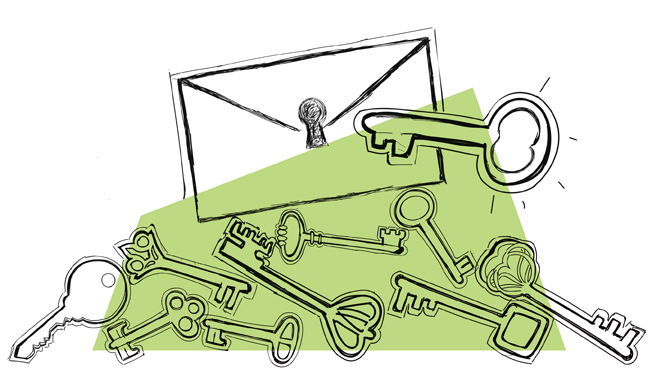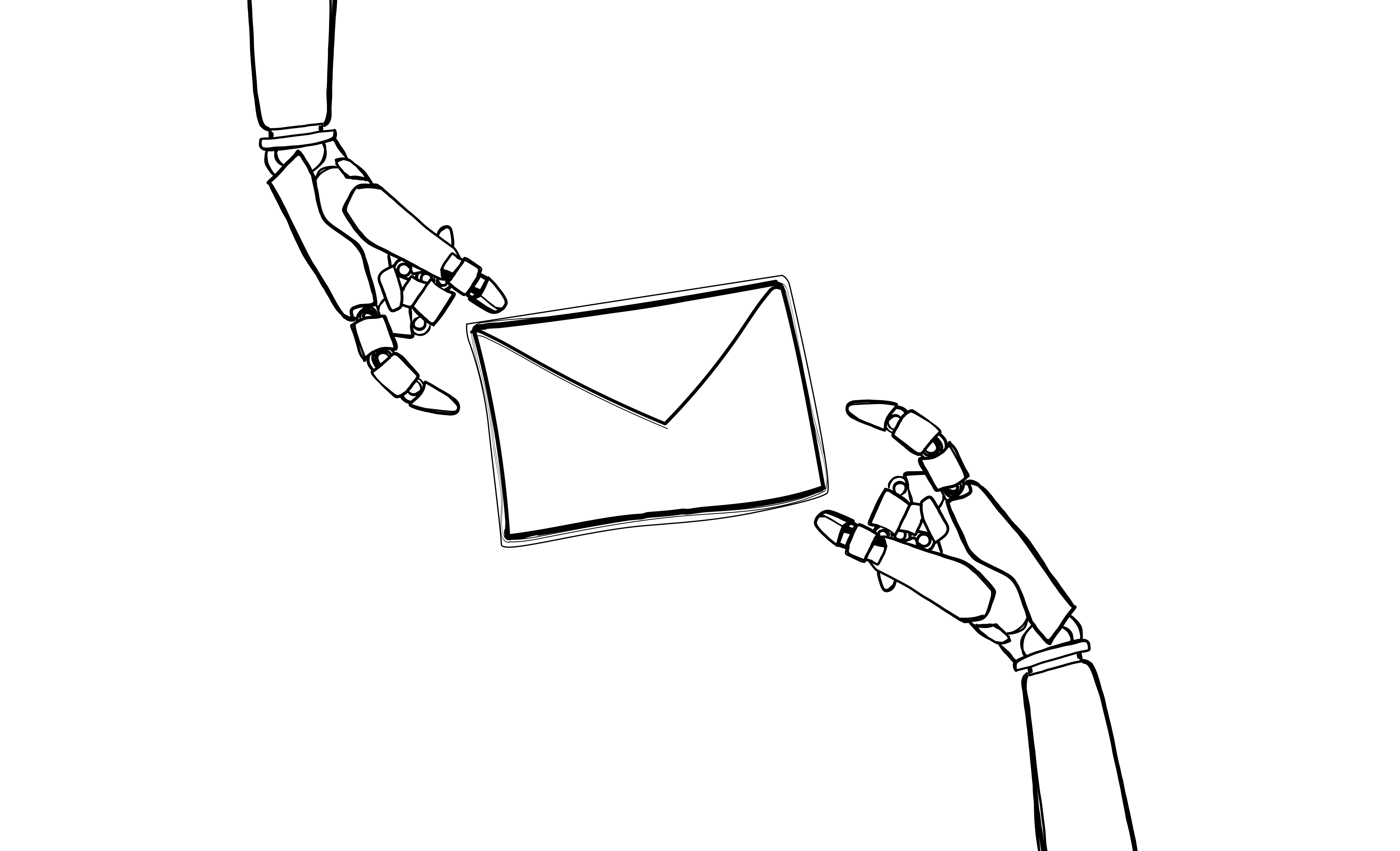With the recent debut of ChatGPT, it seems that all we hear about is how AI is taking over. Taking our jobs! Making people obsolete! Threatening our very existence! We’re all doomed!
Ok, that might be a little too much but you get the point.
Suddenly everyone is buzzing about the limitless potential of AI and wondering how far it will go.
I’ll leave that for others to discuss but, given that AI is very much trending right now, I thought it would be a good time to take a look at AI-powered tools that are aimed at a specific niche — emails for cold outreach.
These tools, usually called AI email assistants, come up with different texts based on algorithms and your input to create emails that are supposed to be used in different parts of the sales funnel. From the first “Hello” to the final email you send before you give up on an unresponsive address, AI email assistants are there to help you craft your message.
What is an AI email writing assistant?
First, let’s clarify that AI email writing assistants aren’t really using true Artificial Intelligence in the sense that they don’t think for themselves, make their own decisions or threaten our very existence!
Instead, they use deep learning language models to take texts from massive datasets and, using their programming, determine what the best response to a prompt is. They analyze the emails you receive and use their “experience” in the form of their language model training to make informed guesses about how to reply to them, using your prompts and your previous replies to similar messages as a guide.
We want to focus on the email applications of these writing assistants so there’s no need to dive too deep into the science behind them but just so you know, the “AI” part of “AI email writing assistant” needs a little qualification.
So, with that out of the way, we can broadly describe AI email writing assistants as digital tools that are trained in language patterns and usage to help us compose, enhance, organize and track emails. Think of the autocomplete feature in Google’s search field or the suggestions your phone makes when you’re typing a message and apply that to the entire process of crafting emails at scale — that’s what AI email assistants do.
As with any other digital tool, the idea is to make life easier, save time and, hopefully, finish with a better result than you would make on your own.
Now let’s turn to how we put them to work for us.
What can an AI email assistant help you with
There are a number of ways that an AI email assistant can help in the process of creating and managing cold email outreach campaigns:
- Getting started faster. Sometimes the first words are the hardest to type out. An AI assistant can speed up the process by immediately providing you with a kind of template you can alter and expand. A few extra words here, another bullet point there and you’re almost done whereas you’re still staring at a blank screen if you’re on your own.
- Better subject lines. These are always tough. They have to be really short to gain the recipient’s interest. They also have a huge impact on your open rates. They have to be short but still refer to what’s inside the email. Short but not clickbaity. Did I mention they have to be short? An AI assistant can be a big help here, with ideas and options you may not have thought of.
- Proofreading. Typos happen and, yes, some people still struggle with “it’s” versus “its”. Poor punctuation, spelling and grammar just isn’t a good look in professional communication and your AI assistant can save you from embarrassment.
- Metrics. Some AI tools offer analytic insights in the form of opens, clicks and other metrics. While many sales and marketing teams already have another tool that does this, some may not and it’s just a nice extra to consult to see if you’re on the right track.
One quick note on how not to use an AI email assistant. Don’t fall into the trap of simply copying and pasting whatever it generates right into your cold email. They do make mistakes and you still need to go through the same personalization process you would if you didn’t have an AI assistant at all.
Remember, the tool is there to help you, not do everything for you. So use it as a starting point, a guide, a sort of inspiration, rather than a finished piece of work.
Pros of using an AI email assistant tool
Let’s look at some of the most common benefits of using an AI email assistant:
1. It might be hard to admit, but a machine’s spelling and grammar might be better than yours
Its vocabulary might be better too. It’s true, we all make mistakes and typos and just miss things that are right in front of us. Machines don’t (when it comes to typos, that is – creativity is a different matter). If you don’t trust your ability to meet professional standards with your own writing, some help from AI is probably a good idea.
2. AI might think of a sales angle that hadn’t occurred to you
It’s easy to get tunnel vision or simply stick with what you’re used to. Using an AI assistant can freshen up your pitch sometimes by taking an approach you hadn’t thought of before. You can decide if it fits in your message or not, but the point is that you gain some variety from adding another voice to the mix. Ok, AI doesn’t have a voice, but you know what I mean.
3. Using an AI assistant saves time, especially for anyone who has writer’s block
Saving time is a key benefit of any kind of digital assistant. Why sit and stare at the screen, typing out a few words at a time and then critiquing your work before adding another few words when you can just get just what you need with a few clicks? You have too many things to do, so save time where you can.
4. Some of AI email assistants are really good
It’s not like you’re compromising on quality, after all. Using AI writing software can be a win-win situation, where the prospect gets a clear, compelling message (of course after you’ve personalized and tweaked what the AI assistant generated in the first place) and you get conversations started. What’s not to like?
Cons of using an AI email assistant tool
Now for the potential downsides of choosing to make use of an AI writing tool for your emails:
1. AI may not get the right tone – too salesy, not salesy enough, etc.
AI-powered writing assistants are very impressive pieces of software but they’re still pieces of software. As humans, we can pick up on small signs that tell us that we’re talking to a machine. Combined with the fact that everyone knows that everyone else is using AI for something, it’s easy to make recipients suspect that your message is less than authentic.
2. AI can never personalize your email as well as you can, so why not write the whole thing yourself?
It’s not like the version that the AI software gives you is the version that goes out in your emails. You still need to personalize various fields and add content that is supposed to give the impression of 1-to-1 communication. As long as you’re doing that, why not take a few extra minutes and simply compose the whole message yourself?
3. Someone else might be using the same tool and text, creating issues with spam filters
It’s a big world, and someone, somewhere has the same job that you do and they look for the same solutions you do and can end up using the same tools you do. That means your digital twin might be out there somewhere, sending massive amounts of identical emails, which will eventually be recognized as being similar to your emails by the all-knowing spam filters. Guess what happens after that? You both get banned. Too bad for you — the court of spam doesn’t have an appeals process.
4. Over-reliance on automation for everything can bring the focus away from the personal touch you should always have
Let’s go to the big picture here. Ever notice how relying on tools to do everything dilutes our skills? No one can do math in their head anymore because we have calculators. No one can read a map because we just tell our phones where we want to go and it gives us directions. Cold emailing is all about personal touches and approaches. You need to have that kind of mindset to connect with prospects and outsourcing the composition of your message is a good way to forget how to reach out to real people.
5. A lot of AI email assistants are really, let’s say, not good
Not all AI assistants are created equal. If you make a bad choice, you can be stuck with emails that sound like they were translated from Italian into English by someone who only speaks Norwegian. The quality of the language, the structure of the message, the calls to action and everything else just scream “This was written by a robot” and you know how the prospect will react to that.
Summary
If you spend a lot of time working closely with email, AI writing assistants should be on your radar. They can make your emails more effective, even in the extra-challenging world of cold email campaigns. On top of that, you can save time that you can devote to other parts of your job.
At the same time, even the best tools aren’t as good as a creative, experienced email pro (at least not yet…). So remember to use AI email assistants as a supplement to what you create yourself instead of relying on them for everything and you can combine the best that humans and machines have to offer!
Ps. Now check out Part 2 where I’ll put a bunch of AI email writing tools to the test and analyse the cold emails they generate.
READ ALSO

15 Best Subject Line Examples We’ve Come Across (Updated)
We always say that a cold email subject line is like a key to a door. Today, I present to you examples of attention-grabbing subject lines that will work like the right key to the right door and open up a conversation with your prospect. We analyzed the best sales email subject lines at Woodpecker and uncovered a really interesting thing that may help you. Keep on reading to find out what it is.

4 Definitive Reasons Why Targeting Drives Cold Email Outreach
Master the art of targeting and you're bound to unleash the full potential of your cold email campaigns. Here are 4 good reasons why targeting should become your core practice for cold emailing, because it influences everything from locating customers to crafting personalized messages that engage and convert. This is a guest post by Piotr Zaniewicz, CEO @RightHello. If I was to create a list of experts on lead generation, or B2B outbound sales process, Piotr and his team would definitely be in top positions. If you're not sure what targeting is and why you need it for your cold email campaign, make sure you don't skip this one.

Woodpecker Academy – A 5-step Course To Help You Build a Successful Cold Email Campaign
We are pleased to announce that Woodpecker Academy is now live! We've released our first online course. After 6 years of creating content focused on cold emailing, we’ve decided to merge all the knowledge we've shared so far into a step-by-step workflow that will help you launch successful cold email campaigns.

